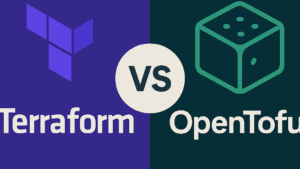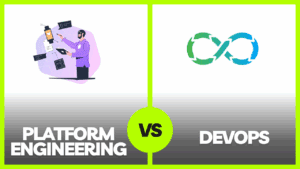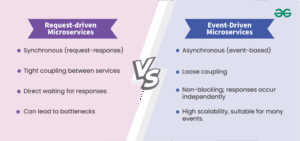In this article, we will explore the intricacies of designing a cloud architecture using Terraform. As technology continues to advance, businesses are increasingly relying on the cloud to meet their computing needs, and implementing a well-designed cloud architecture is crucial for optimal performance and scalability. Through the power of Terraform, a popular infrastructure as code tool, we will guide you through the process of creating a cloud architecture that is fully managed and efficiently utilizes the capabilities of the cloud. With our expertise in this subject matter, SlickFinch is here to help, so feel free to contact us if you require assistance in designing your cloud architecture using Terraform.

Cloud Architecture Basics
Cloud architecture is the design and structure of a cloud computing infrastructure that enables the delivery of cloud services. It encompasses the arrangement of various components such as networks, servers, storage, and services, to provide scalability, reliability, and flexibility in the cloud environment.
Understanding Cloud Architecture
To understand cloud architecture, one must grasp the concept of cloud computing. Cloud computing refers to the delivery of on-demand computing resources (such as servers, storage, applications, and services) over the internet. A cloud architecture, therefore, is the blueprint that defines how these resources are organized and utilized within a cloud environment.
Cloud architecture is vital for businesses as it allows them to leverage the benefits of the cloud, such as cost-efficiency, scalability, and improved accessibility. It enables businesses to adapt quickly to changing demands, offers high availability, and enhances disaster recovery capabilities.
Benefits of Cloud Architecture
There are several benefits to adopting a well-designed cloud architecture.
Firstly, it offers scalability and flexibility. Cloud architecture allows businesses to easily scale up or down their resources based on demand, ensuring optimal performance at all times. This eliminates the need for businesses to invest in expensive on-premises infrastructure that may become obsolete or underutilized.
Secondly, cloud architecture provides cost-efficiency. With the pay-as-you-go model, businesses only pay for the resources they actually use, rather than investing in fixed infrastructure costs. This enables them to reduce operational and maintenance costs significantly.
Thirdly, cloud architecture enhances accessibility. Cloud services can be accessed from anywhere with an internet connection, allowing businesses to access their applications and data from multiple devices and locations. This promotes collaboration and productivity, especially in today’s remote work environment.
Introduction to Terraform
Terraform is an open-source Infrastructure as Code (IaC) tool that allows users to define and provision cloud infrastructure resources using declarative configuration files. It simplifies the management and deployment of cloud resources by providing a consistent and reproducible way to create, modify, and destroy infrastructure components.
Terraform is cloud-agnostic, meaning it supports multiple cloud providers, including AWS, Azure, and Google Cloud. This allows businesses to adopt a multi-cloud or hybrid cloud strategy, depending on their needs. With Terraform, infrastructure changes can be made more efficiently and with less risk, as the entire infrastructure is treated as code.
Planning Your Cloud Architecture
Before diving into the implementation of cloud architecture, it is crucial to plan and strategize to ensure optimal results. The following steps will guide the planning process.
Defining Functional and Non-functional Requirements
Start by defining the functional and non-functional requirements of your cloud architecture. Functional requirements refer to the specific capabilities and features your architecture needs to support, such as load balancing, high availability, or data storage. Non-functional requirements, on the other hand, focus on performance, security, scalability, and other system-wide attributes.
By clearly defining these requirements, you can make informed decisions about the cloud services and infrastructure components needed to meet them effectively.
Identifying Workloads and Services
Next, identify the workloads and services that will be running in your cloud environment. This includes applications, databases, web servers, storage needs, and any other components required by your business. Assess the resource requirements of these workloads to determine the necessary cloud resources and configurations.
Determining Cloud Provider
Choose the cloud provider that best aligns with your requirements and budget. Consider factors such as pricing, geographic coverage, service offerings, support, and integration with other tools. Each cloud provider has its own set of strengths and weaknesses, so it’s essential to evaluate and select the one that suits your specific needs.
Choosing the Right Cloud Architecture Pattern
Research and select the most suitable cloud architecture pattern for your project. Cloud architecture patterns are standard approaches that address common design challenges in cloud environments. These patterns can range from simple single-tier deployments to complex multi-tier architectures.
Consideration should be given to factors such as scalability, high availability, fault tolerance, and cost optimization when choosing the right pattern. Each pattern has its own trade-offs, so evaluate them carefully against your requirements before making a decision.
Overview of Terraform
To effectively utilize Terraform, it’s crucial to understand its key concepts and features.
What is Terraform?
Terraform is a tool developed by HashiCorp that allows users to define and manage infrastructure as code. It provides a declarative language for describing the desired state of your infrastructure and handles the provisioning and management of cloud resources.
Terraform eliminates the need for manual provisioning and management of infrastructure components, reducing the risk of human error and enabling greater efficiency and reproducibility.
Features of Terraform
Terraform offers several features that make it a powerful tool for managing cloud infrastructure:
-
Infrastructure as Code: Terraform uses code to describe the desired infrastructure configuration. This allows for versioning, collaboration, and easy replication of infrastructure across multiple environments.
-
Resource Graph: Terraform builds a dependency graph of resources, ensuring that resources are provisioned in the correct order and that changes are applied safely.
-
Plan Preview: Terraform provides a preview of the changes that will be made to the infrastructure before applying them. This allows for review and validation before making any modifications.
-
State Management: Terraform tracks the state of the infrastructure, allowing it to manage changes, perform updates, and track drift in configuration over time.
-
Extensibility: Terraform supports a wide range of providers, allowing users to manage resources across multiple cloud platforms and services.
Terraform Providers
Terraform uses providers to interact with various cloud platforms and services. Providers are plugins that enable Terraform to provision and manage resources offered by different cloud providers.
Popular providers include AWS, Azure, Google Cloud, and many others. By using providers, Terraform abstracts the differences between cloud platforms, allowing users to write consistent code that can be reused across different providers.
Infrastructure as Code
One of the key principles of Terraform is Infrastructure as Code (IaC). With IaC, infrastructure configurations are defined in code, which can be versioned, managed, and shared using version control systems like Git.
By treating infrastructure as code, entire cloud environments can be created, modified, and destroyed programmatically. This provides significant benefits in terms of repeatability, collaboration, and automation.

Setting Up Your Environment
Before diving into Terraform, several steps need to be taken to set up your environment correctly.
Installing and Configuring Terraform
Start by installing Terraform on your local machine. Terraform is available for all major operating systems and can be downloaded from the official website or package managers.
Once installed, configure the necessary environment variables to ensure Terraform can be executed from anywhere in the command line. This involves adding the Terraform executable path to the PATH environment variable.
Choosing a Cloud Provider
Select the cloud provider you identified during the planning phase and sign up for an account. Each provider has its own registration process and pricing structure. Make sure to familiarize yourself with the provider’s documentation and terms of service.
Creating API Credentials
To interact with the cloud provider’s API, you’ll need to create API credentials. These credentials authenticate Terraform with the cloud provider, allowing it to create and manage resources on your behalf.
Each provider has its own method for generating API credentials, which usually involves creating an access key or token through the provider’s web console. Make sure to securely store these credentials and avoid sharing them.
Configuring Terraform Providers
Once you have your API credentials, you need to configure the Terraform providers. This involves specifying the necessary credentials and any provider-specific configurations in the Terraform configuration files.
Terraform configuration files are written in HashiCorp Configuration Language (HCL) and define the desired state of your infrastructure. Providers are declared within the configuration files, along with the necessary credentials and configurations.
Building Infrastructure with Terraform
With your environment set up, it’s time to start building infrastructure using Terraform.
Understanding Terraform Configuration Language (HCL)
Terraform Configuration Language (HCL) is a domain-specific language that provides a declarative syntax for defining the desired state of your infrastructure. It is used to write the Terraform configuration files, which specify the resources and their configurations.
HCL is designed to be human-friendly and easy to read. It allows you to define variables, specify resource dependencies, and set resource configurations using a concise and intuitive syntax.
Creating Terraform Files
Terraform files typically have a .tf extension and are written in HCL. These files define the infrastructure resources and their configurations. Each file represents a module or a component of your infrastructure, such as a virtual machine, network, database or even an entire Kubernetes cluster.
Terraform files can be organized into directories, making it easier to manage and maintain large infrastructure deployments.
Defining Variables
Variables in Terraform are used to parameterize your infrastructure configuration. They allow you to define reusable values that can be passed into the Terraform configuration at runtime. This provides flexibility and allows for easy configuration changes without modifying the underlying code.
Variables can be defined in separate files or directly within the Terraform configuration files. They can also have default values and be categorized into different types, such as strings, numbers, or booleans.
Writing Terraform Modules
Terraform modules allow you to encapsulate and reuse infrastructure configurations. A module is a collection of Terraform resources that are grouped together and can be used as a single entity.
Modules promote code reusability, maintainability, and collaboration within teams. By creating modules, you can abstract complex infrastructure configurations into reusable building blocks that can be easily shared and versioned.
Provisioning Cloud Resources
Now that you have your infrastructure defined, it’s time to provision the actual cloud resources using Terraform.
Managing Kubernetes Clusters
Terraform is the ideal tool for deploying and managing Kubernetes clusters. When you manually create a Kubernetes cluster you can never really be sure that you didn’t forget to change one of the parameters, or that you can precisely repeat the same steps when creating the cluster for other environments.
Terraform can build the same cluster multiple times on multiple environments by using the same parameters and configurations that you only have to define once.
Configuring Networks and Security Groups
Network configurations are crucial for setting up a secure and well-connected cloud environment. Terraform allows you to define networks, subnets, and security groups, ensuring that your resources are properly isolated and protected.
By leveraging Terraform’s native networking capabilities or integrating with third-party network providers, you can easily create and manage network configurations across different cloud providers.
Creating Load Balancers
Load balancers distribute incoming network traffic across multiple servers to ensure efficient resource utilization and high availability. With Terraform, you can define and configure load balancers using the appropriate cloud provider’s load balancing service.
By provisioning load balancers with Terraform, you can easily scale your applications horizontally, handle traffic spikes, and improve fault tolerance.
Setting up Auto Scaling Groups
Auto Scaling Groups (ASGs) allow you to automatically adjust the number of instances based on demand. Terraform provides the ability to create and manage ASGs, ensuring that your applications can dynamically scale up or down to accommodate varying workload requirements.
By defining scaling policies and thresholds, you can automate the scaling process and ensure optimal performance and cost-efficiency.
Working with Cloud Storage
Storage is a critical component of any cloud infrastructure. Terraform provides capabilities for managing various types of cloud storage resources.
Creating and Managing Object Storage
Object storage is a cost-effective and scalable solution for storing large amounts of unstructured data. With Terraform, you can create and manage object storage buckets or containers offered by cloud providers such as AWS S3 or Azure Blob Storage.
Terraform allows you to configure access controls, replication options, and other storage-specific settings for object storage resources.
Implementing Cloud File Systems
Cloud file systems provide shared storage that can be accessed by multiple instances simultaneously. Terraform enables you to provision and manage cloud file systems, allowing for easy file sharing and collaboration between instances.
By defining the desired file system properties and access controls, you can create scalable and accessible file systems using Terraform.
Utilizing Database Services
Database services offered by cloud providers, such as Amazon RDS or Azure SQL Database, provide managed database solutions that eliminate the need for manual database administration. Terraform allows you to provision and configure these database services, ensuring that your data is stored securely and efficiently.
With Terraform, you can define database instances, set database configurations, manage backups, and perform other database-related tasks.
Managing Data Backup and Recovery
Data backup and recovery are crucial for maintaining data integrity and protecting against data loss. Terraform provides capabilities to define backup and recovery workflows, ensuring that your data is backed up and recoverable in case of failure or data corruption.
By leveraging cloud provider-specific backup services and integrating them into your Terraform configurations, you can implement robust backup and recovery strategies.
Implementing High Availability and Fault Tolerance
High availability and fault tolerance are essential considerations when designing cloud architectures. Terraform provides features and patterns to ensure reliable and resilient infrastructures.
Designing Multi-Availability Zone (AZ) Architecture
To achieve high availability, it is recommended to distribute your resources across multiple availability zones (AZs) offered by your cloud provider. Terraform enables you to define resources in different AZs, ensuring that your infrastructure can withstand failures in a single zone.
By leveraging Terraform’s multi-AZ capabilities, you can design architectures that provide continuous service availability even in the event of AZ failures.
Implementing Fault-Tolerant Load Balancing
Load balancers play a critical role in achieving fault tolerance. Terraform allows you to configure load balancers with fault-tolerant settings, ensuring that traffic is distributed evenly and redirected to healthy instances in case of failures.
By combining multi-AZ deployments with fault-tolerant load balancing, you can design architectures that are resilient to failures and offer uninterrupted service availability.
Setting up Disaster Recovery
Disaster recovery is a crucial aspect of cloud architecture. Terraform enables you to define and manage disaster recovery solutions, such as replicating your infrastructure in a different geographic region or implementing failover mechanisms.
By leveraging Terraform’s disaster recovery capabilities, you can ensure that your infrastructure can quickly recover from catastrophic events and minimize downtime.
Monitoring and Alerting
Monitoring and alerting are essential for proactive incident management and performance optimization. Terraform integrates with various monitoring and alerting tools, allowing you to monitor resource metrics, set up alarms, and automate incident response.
By combining Terraform with monitoring solutions, you can gain real-time insights into the health and performance of your infrastructure, enabling you to take timely actions when needed.
Security Best Practices
Security should be a top priority when designing cloud architectures. Terraform provides features and practices to ensure secure cloud environments.
Securing Cloud Resources
Terraform enables you to define security configurations for your cloud resources. This includes setting up firewalls, configuring access controls, and implementing encryption at rest and in transit. By following security best practices and using Terraform’s capabilities, you can safeguard your infrastructure from unauthorized access and data breaches.
Managing Identity and Access Management
Identity and Access Management (IAM) is vital for controlling access to your cloud resources. Terraform integrates with cloud provider IAM services, allowing you to define roles, policies, and permissions for your resources.
By implementing IAM best practices in your Terraform configurations, you can ensure that only authorized individuals and services have access to critical resources.
Implementing Encryption at Rest and in Transit
Data encryption ensures the confidentiality and integrity of your data. Terraform provides features to define encryption settings for your cloud storage, databases, and network communications.
By leveraging Terraform’s encryption capabilities and following encryption best practices, you can protect sensitive data from unauthorized access.
Auditing and Compliance
Compliance with industry regulations and internal policies is crucial for many businesses. Terraform allows you to define auditing and compliance requirements in your infrastructure configurations.
By integrating with auditing and compliance tools, Terraform enables you to automate the enforcement and monitoring of compliance policies, reducing the risk of non-compliance.
Conclusion
In conclusion, cloud architecture is a critical aspect of leveraging the benefits of cloud computing. By properly planning and designing your cloud architecture using Terraform, you can achieve scalability, cost-efficiency, and high availability for your infrastructure.
Terraform’s flexibility and features make it an excellent choice for managing cloud resources as code. The ability to define infrastructure configurations, provision resources, and manage infrastructure changes through Terraform provides significant advantages in terms of efficiency, reliability, and collaboration.
If you need assistance with cloud architecture design using Terraform, look no further than SlickFinch. As experts in the field, we have a deep understanding of cloud architecture and extensive experience in utilizing Terraform to design and implement robust cloud infrastructures. Contact us today to leverage our expertise and elevate your cloud architecture to the next level.




